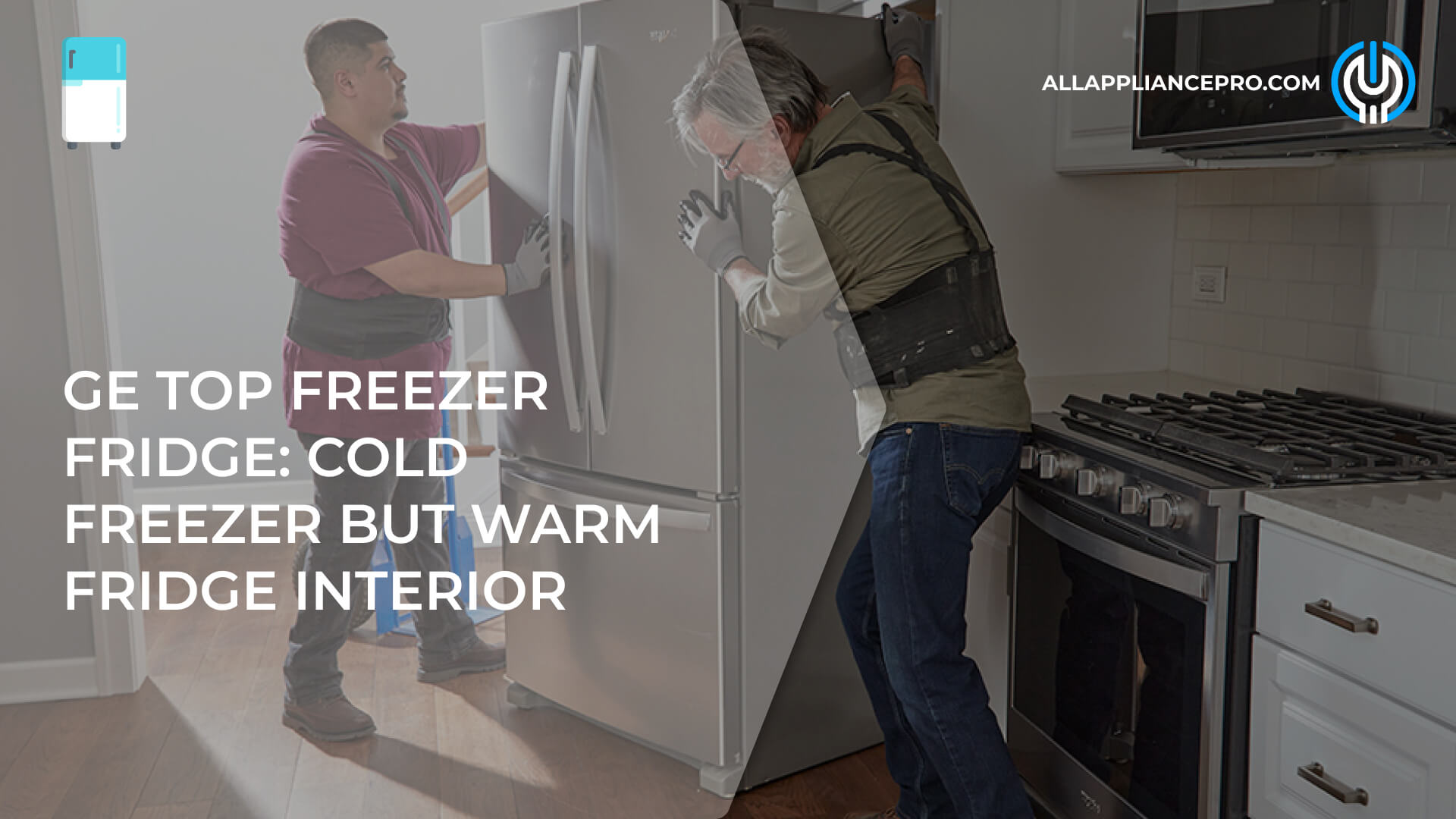GE Top Freezer Fridge Issues

When your GE top freezer fridge has a cold freezer but a warm fridge interior, it can be frustrating and impact the freshness of your food. Additionally, if you're also requesting a dryer diagnostic service, it's essential to ensure both appliances receive comprehensive attention. In this article, we will guide you through troubleshooting steps for your GE top freezer fridge, as well as highlight the importance of having both appliances looked at together.
Check the Temperature Settings
Start by verifying the temperature settings on your GE top freezer fridge. Ensure that the temperature control knob or digital settings are set to the recommended levels. Consult the user manual for specific temperature guidelines for the fridge and freezer compartments. Adjust the settings if necessary and monitor the temperature to see if it improves.
Clean the Condenser Coils
Over time, dust and debris can accumulate on the condenser coils at the back or bottom of the fridge, affecting its cooling efficiency. Clean the condenser coils using a vacuum cleaner or a soft brush. This process enhances heat dissipation and allows the fridge to cool more effectively.
Check the Evaporator Fan
The evaporator fan circulates cold air throughout the fridge. If the fan is not functioning correctly, it can result in temperature imbalances. Here's what you can do:
- Open the fridge door and locate the evaporator fan, usually situated at the back of the freezer compartment.
- Listen for the sound of the fan running. If you don't hear anything, it may be a sign of a faulty fan motor or a blockage.
- Inspect the fan for any visible obstructions, such as ice buildup or debris. If present, carefully remove them.
- If the fan still doesn't operate, it may require professional attention, and it's advisable to contact a technician.
Check the Damper Control
The damper control regulates the flow of cold air from the freezer to the fridge compartment. If the damper is stuck or not functioning correctly, it can result in insufficient cooling in the fridge. Here's what you can do:
- Locate the damper control, which is typically located in the upper rear of the fridge compartment.
- Ensure that the damper is not blocked by any objects or ice buildup.
- Gently move the damper control to check if it opens and closes smoothly.
- If the damper is stuck or not operating properly, it may require professional assistance to resolve the issue.
Importance of Having Both Appliances Looked at Together
Since you've also requested a dryer diagnostic service, it's a good idea to have both appliances looked at together. This allows a technician to comprehensively assess the performance and potential issues of both the fridge and dryer. It can help identify any underlying factors that may be causing the fridge's temperature imbalance and ensure a thorough inspection of both appliances.
Conclusion
Dealing with a cold freezer but a warm fridge interior in your GE top freezer fridge can be troublesome. By checking the temperature settings, cleaning the condenser coils, inspecting the evaporator fan, and examining the damper control, you can troubleshoot and address the issue effectively. Remember, if you're also requesting a dryer diagnostic service, it's essential to have both appliances looked at together for a comprehensive assessment.


